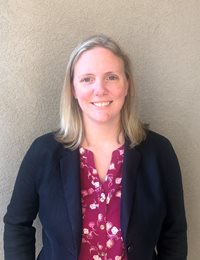
©Wavebreakmedia/iStock/Getty Images Plus
A panel of private company accountants recently convened to ask the FASB to consider pushing the deadline of ASC 842 again. In light of the request, FEI Daily spoke with Sarah O’Sullivan, Accounting Director at LeaseQuery. O’Sullivan is a CPA with 15 years of experience in the industry. In this Q&A, she shares her lease accounting predictions for 2022, including the day 2 lease accounting challenges companies are facing and reassessing real estate leasing needs.
FEI Daily: Can you share some predictions you have for real estate leases in 2022? Generally speaking, are companies prepared to properly account for their leases?
 Sarah O’Sullivan: The ongoing impact of the COVID-19 pandemic on real estate leases will likely be seen well into 2022, given the continued changing demand for office and retail space. Many businesses continue to operate on remote, hybrid or flexible work schedules in order to comply with evolving state-by-state coronavirus restrictions and employee needs. While there are some industries that can, to an extent, pivot their need for real estate leases, others, like manufacturing, rely on their real estate leases to meet business output. Similarly to this past year, companies will likely be taking several factors into consideration, such as staffing and operational needs, when making real estate leases decisions in 2022 and beyond.
Sarah O’Sullivan: The ongoing impact of the COVID-19 pandemic on real estate leases will likely be seen well into 2022, given the continued changing demand for office and retail space. Many businesses continue to operate on remote, hybrid or flexible work schedules in order to comply with evolving state-by-state coronavirus restrictions and employee needs. While there are some industries that can, to an extent, pivot their need for real estate leases, others, like manufacturing, rely on their real estate leases to meet business output. Similarly to this past year, companies will likely be taking several factors into consideration, such as staffing and operational needs, when making real estate leases decisions in 2022 and beyond.
Therefore, it is important that companies make sound “lease vs. buy” decisions and properly account for modified, terminated and new leases while ensuring they are compliant under ASC 842. Especially for companies that have many service agreements, it is important that they review these agreements to ensure they record embedded leases as well. Tools and guidance are available to ensure compliance—companies just need to be aware of the guidance, understand it and implement it properly so there are no discrepancies come auditing season.
FEI Daily: What updates can you share regarding a potential delay to the ASC 842 transition deadline for private companies and non-profit organizations?
O’Sullivan: A panel of private company accountants convened at the end of September imploring the FASB to consider once again pushing back the deadline for ASC 842 compliance. While additional time to comply with the transition deadline might be helpful for some—especially given the insights from post-transition public companies that cautioned the transition was both more complicated and took more time than anticipated—companies should not pause their transition efforts as they await FASB’s decision.
FEI Daily: If the FASB delays the ASC 842 transition deadline for private companies and non-profit organizations, should private companies and non-profit organizations change their implementation timeline for ASC 842? If so, how should they think about reprioritizing their efforts?
O’Sullivan: If the FASB delays the ASC 842 transition deadline for private companies and non-profit organizations, companies should still continue on with the transition process as planned, given the complexities of this time-consuming process. Remember, the majority of guidance from public companies, who were mandated to finish their transition in the past several years, is that they underestimated the difficulty and time constraints they would encounter. Additionally, we’ve heard from a number of companies that, even with the current deadline fast-approaching in December, some have yet to begin their transition process. Moreover, many companies are still working remotely, which means it’s vital to ensure teams are communicating effectively and proper resources are allocated to ensure a successful transition.
FEI Daily: What are the most significant Day 2 challenges that private companies and non-profit organizations should expect to face after the initial implementation of ASC 842?
O’Sullivan: Once private companies and non-profit organizations have transitioned and become fully compliant with ASC 842, there is still work to be done to remain compliant. It’s important for financial executives and accountants at companies to understand that there are several areas across their business—beyond the balance sheets—that will be affected. Post-transition needs include developing new processes, training staff, upgrading technology, keeping up with more detailed reporting requirements and technical accounting assessments. Continuing compliance after implementation will be a challenge and it will take a team effort in order to ensure accuracy.
FEI Daily: How can these challenges be mitigated?
O’Sullivan: To mitigate day 2 challenges, organization-wide processes and controls need to be put into place so that new lease contracts that are signed by the company are added to the centralized lease repository. Staff should also be trained on how to recognize new embedded leases that may be hidden in other types of contracts.